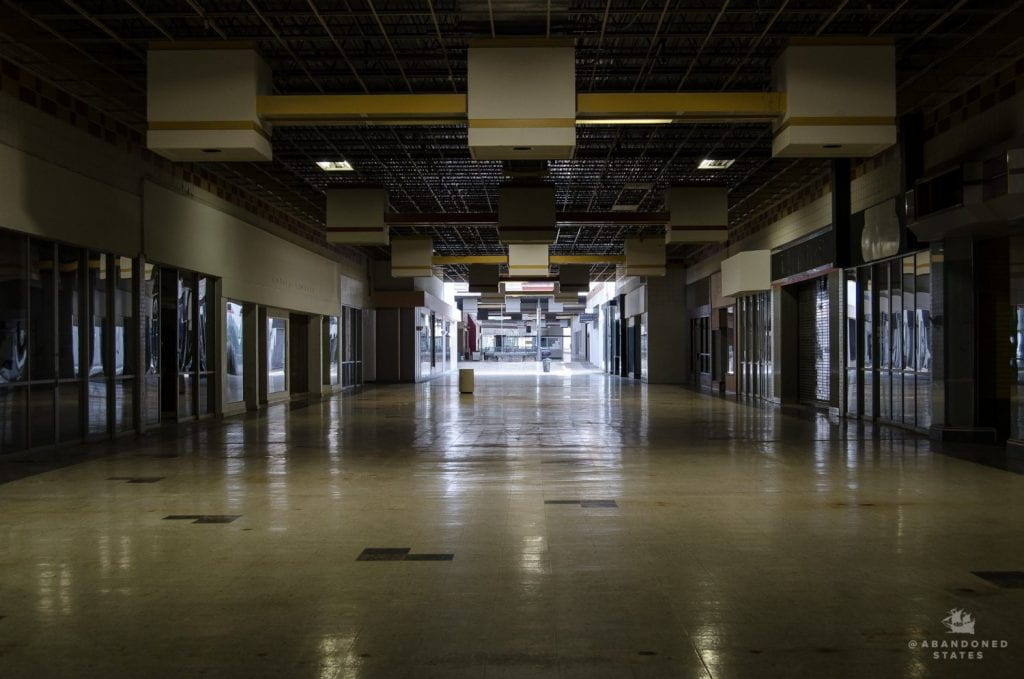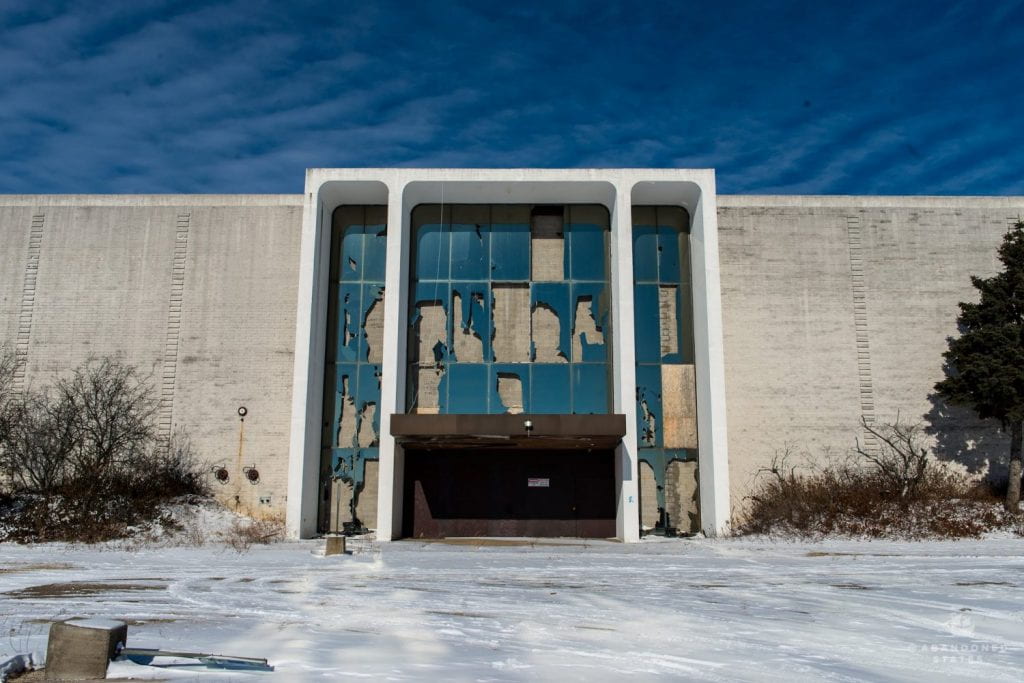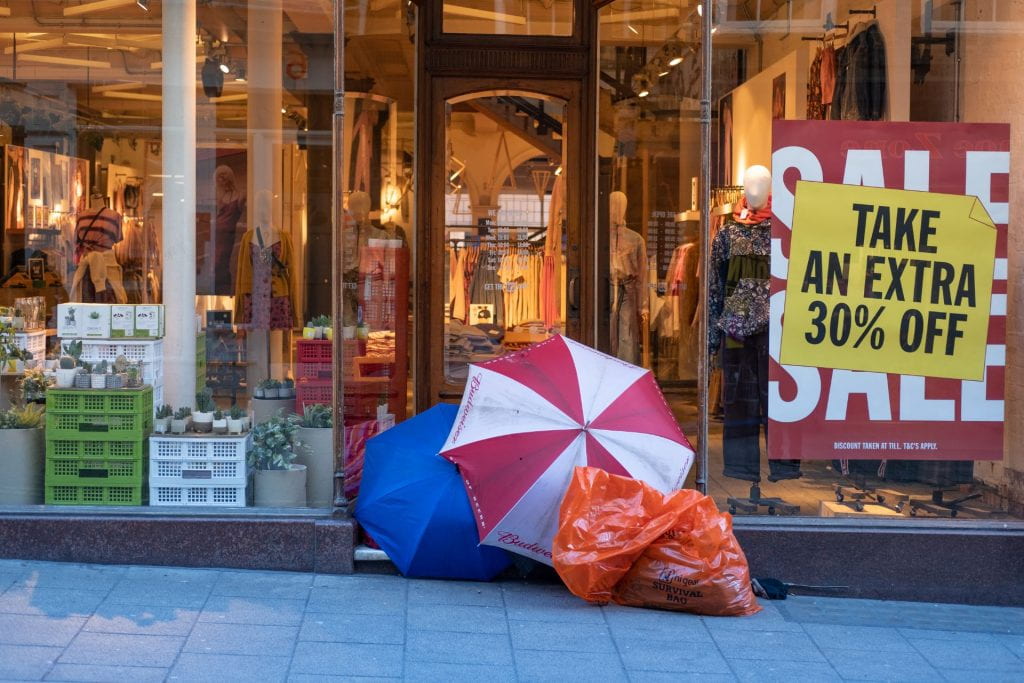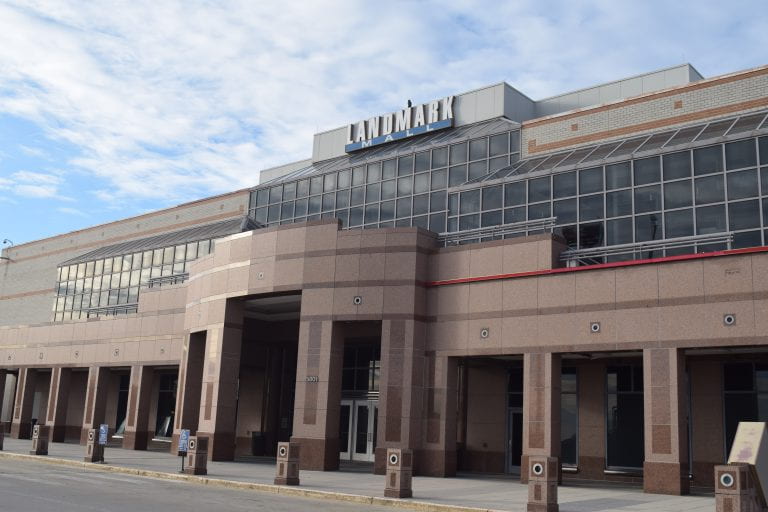
The decline of retail over the past decade has been well publicized, with no shortage of creative ideas for the reuse of vacant spaces. The sharp increase in e-commerce sales over the past decade, coupled with the glut of supply in retail space leftover from the boom in shopping center development, has left the country with an unsustainable amount of retail real estate. This is accelerating due to the ongoing COVID-19 pandemic, with 25% of the malls in the United States expected to close over the next 5 years1. The result has left many property owners, banks, and cities with massively underutilized, large buildings and no clear adaptive reuse path. Malls have been successfully transformed into libraries, churches, schools, and community resource centers, and recent proposals include e-commerce distributions centers and ghost kitchens for food delivery2,3,4. Although intended to be temporary, in one case, a vacant department store in Alexandria, VA has been successfully functioning as a homeless shelter for the last 18 months. Not unlike the retail industry, the growing issue of homelessness in America is also being exacerbated due to the ongoing pandemic. With both issues dire in their own regard, perhaps an opportunity exists to combine the two into a solution that utilizes empty space while helping people find shelter.
The U.S. Department of Housing and Urban Development’s 2019 Point in Time Count estimated 567,715 people experience homelessness on any given night. Representing the equivalent of 17 out of every 10,000 people in the United States, this measure does not include those who may be sleeping on the couch of a friend, in their car, or are in some other form of supportive housing. The U.S Department of Education, which uses data taken from the nation’s schools, estimated that there were more than 1.5 million homeless public-school students, during the 2017-2018 school year. Although there have been modest increases in homeless populations over the past few pre-COVID years (3% from 2018-2019), there is a stark dichotomy between areas with high costs of living and more affordable cities. For example, the District of Columbia (93 people experiencing homelessness out of every 10,000) and New York (47 out of 10,000) have the highest rates. Conversely, Louisiana (6 out of 10,000) and Mississippi (4 out of 10,000) have the lowest rates. Forty-five percent of homeless people are in the five states with the highest rates: Washington, D.C., New York, Hawaii, California, and Oregon5.
When it comes to the current pandemic, there is little information regarding how the homeless population has been affected countrywide. “Very little is known about how [the homeless population] are faring in part because the U.S. Department of Housing and Urban Development — the main federal agency overseeing homeless programs — has not required its national network of providers to gather information on infections or deaths.”6
Homeless shelters across the country vary greatly in quality and practices, and there are many homeless people that refuse to rely on them, even during extreme weather. Of the almost 600,000 homeless individuals, 37% live unsheltered. Dave Pirtle, a member of the organization Faces of Homelessness, preferred living on the streets and summarized the thoughts of many on National Public Radio: “…you hear a lot of terrible things about shelters, that shelters are dangerous places, that they’re full of drugs and drug dealers, that people will steal your shoes, and there’s bedbugs and body lice. And yeah, unfortunately a lot of those things are true.
“I don’t want to say that all shelters are like that. There’s a lot of very good shelters in this country. But there are a lot of big warehouses that are just places where we stick people at night and we really don’t have any regard for how they live there.”7
Policy priorities have recently shifted towards the construction of permanent housing versus homeless shelters, which are temporary for their occupants. While the number of beds in temporary housing facilities has shrunk by 9% over the past 5 years, the number of beds in permanent supportive housing has increased by 20%.5
Homelessness is not the only pre-pandemic issue that will adversely develop as the COVID-19 crisis continues. According to the International Council of Shopping Centers, developers built 750 U.S. malls from 1970 to 2000. Peaking at 1,100 in 2008, the Great Financial Crisis initiated a stunning fall from grace for the nation’s shopping centers8. Although the rise of e-commerce has certainly had its effects, the real issue has been the glut of supply, and the management issues those owners are now facing. In 2019, according to the Lincoln Institute of Land Policy, there were 25 square feet of retail per person in the United States– 5 times that of Europe9. Forbes estimates over 14,000 retail stores will close in 2020, surpassing the 10,000 that closed in 201910. In 2017, a report by Credit Suisse projected that one-quarter of the 1,211 malls dotting the American landscape would also close by 202211. These forecasts will only be intensified by the current pandemic and its effects on the country’s shopping habits.
Green Street Advisors estimates that department stores account for about 30 percent of the mall square footage in the United States, with 10 percent of that number being Sears (which filed for bankruptcy in 2018) and J.C. Penney, which is poised to close up to 250 stores as part of its bankruptcy12.
The Carpenter’s Shelter in Alexandria, VA, a suburb of Washington, DC, demonstrates how the issues of retail’s decline and rising homelessness can potentially be addressed simultaneously. The Shelter began operating out of a former Macy’s department store in 2018, when developer/owner Howard Hughes Corporation left the space vacant, planning to eventually demolish the Landmark Mall and build a mixed-use development in its place. Around the same time, the Carpenter’s Shelter was amid planning a new facility containing a shelter, affordable housing units, and the organization’s offices. The Shelter and Howard Hughes began negotiations with the city, and the Carpenter’s Shelter orchestrated a specific capital campaign of $1 million to pay for the build out, allowing it to commence operation of an 18,000 square foot facility within the greater 150,000 square foot vacant Macy’s big box. Alongside 60 beds of temporary shelter, there is a dining room, offices, a day center, and bathrooms. The temporary solution has been a success by all accounts, and the organization is preparing to move into its new home, which contains 10 units of affordable housing for clients alongside 87 units for residents making 50-60% of median income.
When asked about the feasibility of this model and whether it could be applied elsewhere, Mary Lamm, Executive Director of the Carpenter’s Shelter, was quick to point out that the country does not need, and should not be building, more homeless shelters. As previously noted, there has been a growing trend in the industry towards more permanent housing solutions versus temporary shelters, which can be taxing on individuals.
There is, however, a great need for low income housing, especially in high cost areas such as Alexandria. There is affordable housing, for those making 50, 60, and 80% of Area Median Income. But with an AMI of $110,000, there is still a significant gap in the housing market. The Carpenter’s Shelter estimates that residents of Alexandria need to make close to $24 per hour to afford housing in the area. Virginia’s minimum wage will be increasing from $7.25 to $9.50 in May 2021, underscoring the gap between nominal wages and the income necessary to afford housing in the area.
Low income housing is a complicated issue – with tax credits, regulations, incentives, and zoning restrictions varying between states and municipalities. To make matters even more complex, by attempting to combine low income housing and vacant big box retailers, an entirely new host of issues arise. Residential units need access to natural light, ventilation, and plumbing. The building systems that service retail locations surely vary from those needed to provide a comfortable residence. It is difficult to quantify, but according to the Terner Center for Housing Innovation at U.C. Berkeley, it costs $450,000 per unit to develop affordable housing in California, which is unsurprisingly the state with the highest population of homeless people in the U.S.13
Although it appears that the nation’s problems with homelessness may not be solved by converting vacant retail space into temporary shelters, the concept of replacing them with low-income housing is not out of the realm of possibilities. A survey of vacant mall reuse projects conducted by the National Association of Realtors found 7% of respondents were able to convert a portion of the malls to multifamily housing14. To be sure, market rate housing and low-income housing are different, but if state and local governments, property owners, architects, and affordable housing organizations start thinking outside of the box, the vast amount of current and future vacant space could be used to address the shortage of housing across the country. There is also an opportunity to explore the issue beyond adaptive reuse of existing structures. One such project, the proposed redevelopment of the Lakeforest Mall in Gaithersberg, MD, aims to take advantage of the large parking lots typical of suburban malls to build new ground up multifamily units, while turning parts of the mall into retail space more relevant to modern consumers.
As the pandemic wears on, and more retailers face their demise, there will be endless opportunities to explore reuse and even the demolition and replacement of vacant retail space. It is imperative that low income housing is included on the ever-growing list of potential new uses.

End Notes
- Thomas, L. (2020, August 27). 25% of U.S. malls are expected to shut within 5 years. Giving them a new life won’t be easy. Retrieved October 24, 2020, from https://www.cnbc.com/2020/08/27/25percent-of-us-malls-are-set-to-shut-within-5-years-what-comes-next.html
- Christensen, J. (2008). Big Box Reuse. Cambridge, MA: MIT Press.
- Fung, E., & Herrera, S. (2020, August 09). Amazon and Mall Operator Look at Turning Sears, J.C. Penney Stores Into Fulfillment Centers. Retrieved November 10, 2020, from https://www.wsj.com/articles/amazon-and-giant-mall-operator-look-at-turning-sears-j-c-penney-stores-into-fulfillment-centers-11596992863
- FOOD DELIVERY KITCHENS POP UP IN EMPTY MALLS DEVELOPERS LOOK TO SOLVE TWO PROBLEMS SIMULTANEOUSLY. (2020, February 4). States News Service, NA. https://link.gale.com/apps/doc/A613183437/AONE?u=nysl_sc_cornl&sid=AONE&xid=b532e84d
- State of Homelessness: 2020 Edition. (2020, May 20). Retrieved September 25, 2020, from https://endhomelessness.org/homelessness-in-america/homelessness-statistics/state-of-homelessness-2020/
- Associated Press (2020, August 24). COVID-19 is ‘a crisis within a crisis’ for homeless people. Retrieved November 10, 2020, from https://www.modernhealthcare.com/safety-quality/covid-19-crisis-within-crisis-homeless-people
- Shapiro, A. (2012, December 06). Why Some Homeless Choose The Streets Over Shelters – Talk of the Nation. Retrieved September 25, 2020, from https://www.npr.org/2012/12/06/166666265/why-some-homeless-choose-the-streets-over-shelters
- Bhattarai, A. (2019, November 25). Malls are dying. The thriving ones are spending millions to reinvent themselves. Retrieved October 19, 2020, from https://www.washingtonpost.com/business/2019/11/22/malls-are-dying-only-these-ones-have-figured-out-secrets-success-internet-age/
- Scruggs, Gregory. “The Unmalling of America.” Lincoln Institute of Land Policy, 16 Dec. 2019, www.lincolninst.edu/publications/articles/2019-12-unmalling-america-municipalities-navigating-changing-retail-landscape
- Loeb, W. (2020, November 15). More Than 14,500 Stores Are Closing In 2020 So Far-A Number That Will Surely Rise. Retrieved November 15, 2020, from https://www.forbes.com/sites/walterloeb/2020/07/06/9274-stores-are-closing-in-2020–its-the-pandemic-and-high-debt–more-will-close/?sh=2f73f7c6729f
- Palumbo, J. (2020, March 17). Inside America’s eerie abandoned malls. Retrieved October 19, 2020, from https://www.cnn.com/style/article/abandoned-malls-america-photos/index.html
- Maheshwari, S. (2020, July 05). With Department Stores Disappearing, Malls Could Be Next. Retrieved October 25, 2020, from https://www.nytimes.com/2020/07/05/business/coronavirus-malls-department-stores-bankruptcy.html
- Terner Center Research Series: The Cost of Building Housing. (2016). Retrieved October 26, 2020, from https://ternercenter.berkeley.edu/construction-costs-series
- Yun, L. (Ed.). (2020). CASE STUDIES ON REPURPOSING VACANT RETAIL MALLS May 2020 (Rep.). Washington, DC: National Association of Realtors. doi:https://www.nar.realtor/research-and-statistics/research-reports/case-studies-on-repurposing-vacant-retail-malls
- Corkery, M., & Mangum, A. (2018, June 13). A Macy’s Goes From Mall Mainstay to Homeless Shelter. Retrieved September 21, 2020, from https://www.nytimes.com/2018/06/13/business/macys-homeless-shelter.html


